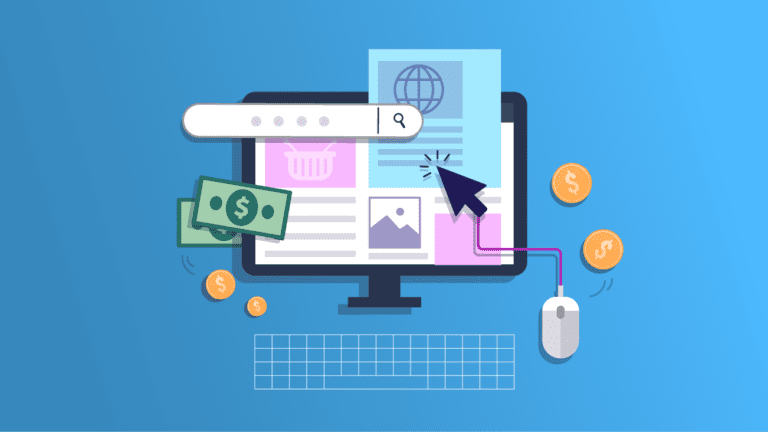As a startup founder or small business owner, you often have to work with a small budget. This can be hard, especially during the early stages of your business when expenses surpass revenues. In situations like these, it seems the only option would be to cut expenses, and among the first to go is your marketing budget, which is unfortunate as it affects your search engine optimization or SEO efforts.
Removing SEO entirely from your marketing strategy could lead to fewer sales and ultimately a drop in profit and revenues because you need it to attract early adopters to your startup and people who will become your raving fans online and offline.
Need more convincing? Here are five reasons why you should invest in SEO even when you’re in a tight budget.
1. Investment in other mediums stop delivering value the moment the budget is exhausted.
As the name suggests, implementing a paid marketing campaign requires money. It’s a pay-to-play game that will stop delivering traffic once you’ve turned off the tap. It’s simple: No more ads, no more leads.
What’s worse is that you’ll likely end up losing money in the first few months of an ad campaign as you experiment on optimization. It will take some time and money to begin running a profitable ad campaign. In short, it takes money to make money.
With a limited budget, this is clearly not a good use of funds. Unlike paid marketing, SEO’s impacts or benefits don’t stop when you halt your SEO efforts. It delivers long-term, scalable results to your startup or small business.
2. Your SEO investment continues to produce value well after the effort is completed.
Contrary to paid marketing, SEO is a sustainable marketing method. Your SEO efforts today willstill deliver benefits to your business several months and even years from now. Your source of organic traffic won’t easily dry up should you take a break from doing SEO due to budget cuts orother reason, so it’s a great long-term strategy to optimize your conversion performance.
With 80% of all website traffic coming from search engines and often your customers’ first point of contact, SEO really is an effective marketing channel to invest in.
3. Return on investment increases over time as more SEO efforts accumulate.
Similar to putting money in a savings account with compound interest benefitting the account holder, SEO has a compounding effect. Searchers trust organic content more than ads and thereby gets clicked on more. As more and more of your target audience finds you online, you begin to rank higher and higher in the search results. When you rank higher for more keywords, you’re more likely to increase your conversions over time.
SEO is not limited to new posts, too, as even old blog posts or historical content can be optimized for SEO. HubSpot, for instance, increased the monthly organic search views of its existing optimized blog posts by an average of 106%.
On the other hand, paid advertising struggles with scale effects and ad blindness, which happens when people see ads frequently that the ad’s messaging becomes stale. This means that if paid marketing is your long-term strategy, you’ll need to regularly refresh your ad copy to make them work.
4. SEO investment is also cheaper than paid advertising.
Back in 2009, Dropbox run a Google Ads campaign for its file hosting service that costs $99/year. Long story short, Dropbox found afterward that it was losing money running the ads with a high cost-per-acquisition (CPA) of $233 to $388.
The lesson: Paid ads can get expensive, especially for competitive industries such as insurance. Just take a look at this cost-per-click (CPC) data of several industries compiled by HubSpot:

As for SEO, there’s a lot of variation but a survey found that a majority of businesses spend lessthan $5,000 per month on SEO. Search Engine Land thinks startups and small businesses are in the 40% of people spending less than $1,000 and local businesses are probably paying less than $500 per month on SEO.
For a more detailed look, here’s the data from the Integrated Marketing Association on the cost per B2B lead by industry. (Remember: You’re paying a one-time fee for something that will provide you benefits for a longer time than paid ads.)

5. SEO is a great foundation of a long-term marketing strategy.
I’m not saying that paid advertising strategies shouldn’t be employed, but they should not be thefoundation of a long term strategy. SEO should be the foundation, with paid advertising filing thegaps on more immediate initiatives (e.g., promotional events, response to recent news cycles, or filling in gaps that your SEO efforts haven’t yet met).
SEO gives your startup or business the best chance to get found online. It might take a while, but as already mentioned, the benefits are worth working and waiting for. However, if you need to reach more customers asap, such as in the case of a new product launch, then paid ads is the way to go as it allows you to customize your ad campaigns so you can put your product in front of more potential customers immediately.
Using SEO and PPC together allows you to have the best chance of reaching the most number of your target market and bringing them to your website. Doing so will enhance the online presence of your startup or small business and your success for the long-term.
Reach a massive audience even on a limited budget with Search Engine Optimization
In today’s crowded digital sphere, it’s not enough to have a website or a social media profile. If you’re not putting yourself in front of searchers, a.k.a. your target market, you’re leaving a big piece of the pie for your competitors to gobble up.
You need to have a solid SEO strategy in place to generate leads, land customers, raise awareness and build a brand. These business objectives take time, and when you’re in a phase where expenses exceed revenues, it becomes too easy to cut your SEO budget. While it might feel right to remove SEO in the short-term, this action will prove short-sighted in the long-term.
An effective SEO strategy—which includes content writing, online directories, on-site optimization and speed performance optimization—doesn’t have to require tons of money. When you work with Digiboost, you’ll have a strategy that’s easy to follow and within your specified budget. This strategic SEO approach will result in higher Google rankings, more relevant website visitors and increased conversions.
What you will need is to put in the work—because it won’t be easy—and be patient. Strong SEOefforts take time. On average, it can take three months to see your SEO efforts drive traffic.
With more and more businesses going online, the competition to attract customers is bound to get stiffer. That’s why you should be thinking about a strategic SEO approach to implement on your business now.






